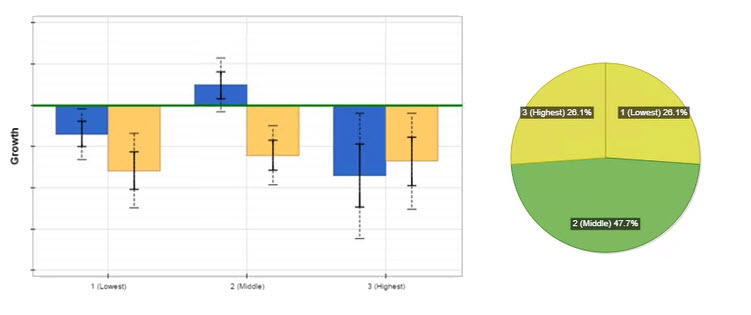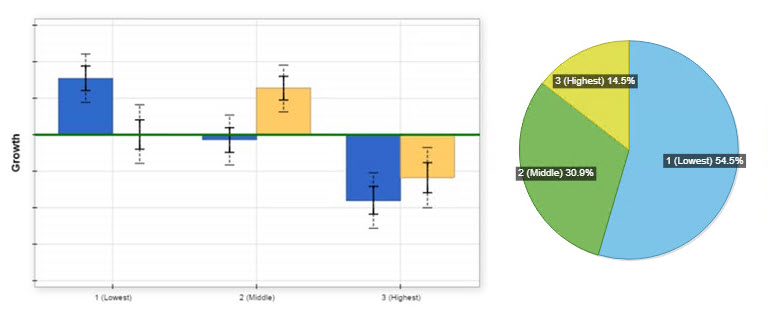- Using PVAAS for a Purpose
- Key Concepts
- PEERS
- About PEERS
- Understanding the PEERS pages
- Evaluation List
- Evaluation Summary
- Evaluation Forms
- Add Educator
- Add Evaluator
- Manage Access
- Add a school-level Educator to PEERS
- Add a district-level Educator to PEERS
- Add the Evaluator permission to a user's account
- Remove the Evaluator permission from a district user's account
- Add the Evaluator or Administrative Evaluator permission to a district user's account
- Remove the Administrative Evaluator permission from a district user's account
- Remove an Educator from PEERS
- Restore a removed Educator
- Assign an Educator to a district-level Evaluator
- Assign an Educator to an Evaluator
- Unassign an Educator from an Evaluator
- Assign an Educator to a school
- Unassign an Educator from a school
- Link a PVAAS account to an Educator
- Working with Evaluations
- Switch between Educator and Evaluator
- View an evaluation
- Use filters to display only certain evaluations
- Print the Summary section of an evaluation
- Understanding evaluation statuses
- Determine whether other evaluators have access to an evaluation
- Lock or unlock an evaluation
- Save your changes
- Mark an evaluation as Ready for Conference
- Release one or more evaluations
- Download data from released evaluations to XLSX
- Make changes to an evaluation marked Ready for Conference
- Reports
- School Reports
- LEA/District Reports
- Teacher Reports
- Comparison Reports
- Human Capital Retention Dashboard
- Roster Verification (RV)
- Getting Started
- All Actions by Role
- All Actions for Teachers
- All Actions for School Administrators or Roster Approvers
- Manage teachers' access to RV
- Assign other school users the Roster Approver permission
- View a teacher's rosters
- Take control of a teacher's rosters
- Add and remove rosters for a teacher
- Copy a roster
- Apply a percentage of instructional time to every student on a roster
- Batch print overclaimed and underclaimed students
- Remove students from a roster
- Add a student to a roster
- Return a teacher's rosters to the teacher
- Approve a teacher's rosters
- Submit your school's rosters to the district
- All Actions for district admin or district roster approvers
- Assign other LEA/district users the Roster Approver permission
- Take control of a school's rosters
- View a teacher's rosters
- View the history of a teacher's rosters
- Edit a teacher's rosters
- Add and remove rosters for a teacher
- Copy a roster
- Apply a percentage of instructional time to every student on a roster
- Batch print overclaimed and underclaimed students
- Return a school's rosters to the school
- Approve rosters that you have verified
- Submit your district's rosters
- Understanding the RV Pages
- Viewing the History of Actions on Rosters
- Additional Resources
- Admin Help
- General Help
Diagnostic
Interpreting Common Patterns
It's important to reflect on the overall patterns of growth across achievement groups, rather than placing too much emphasis on any one value. The following examples illustrate patterns that are common in these reports.
It's important to rely more heavily on the bar graphs than on the pie graphs as you examine the patterns of growth across achievement groups. The bars offer a better view of the relative growth of students in different achievement groups, while the pies provide insight into the percentage of students in each achievement group.
Pattern 1: Tent

In this pattern, we can see that in the most recent year (blue bars) students in the middle achievement group likely exceeded the growth standard, on average. In contrast, lower-achieving and higher-achieving students lost ground. This pattern occurs when the instructional delivery is focused on students who are average in achievement. This teacher might want to consider new strategies for supporting low achievers, as well as opportunities for challenging high achievers.
Pattern 2: Downhill

In this pattern, we can see that in the most recent year (blue bars), on average, the lowest-achieving students made the most growth. As a group, they exceeded the growth standard. Students in the middle achievement group met the standard, and students in the highest achievement group lost ground, overall. In this case, the teacher might want to explore strategies for helping high-achieving students make appropriate growth, and for assisting average-achieving sudents increase their achievement.
Pattern 3: Uphill

In this example, the pattern of growth across achievement groups in the most recent year is the opposite of what we see in pattern 2. In this case, the highest-achievement group exceeded the growth standard, while the lowest and middle achievement groups fell short of the standard, on average. This teacher might want to consider strategies for better targeting instruction at students who are low achievers and those who are average in achievement.